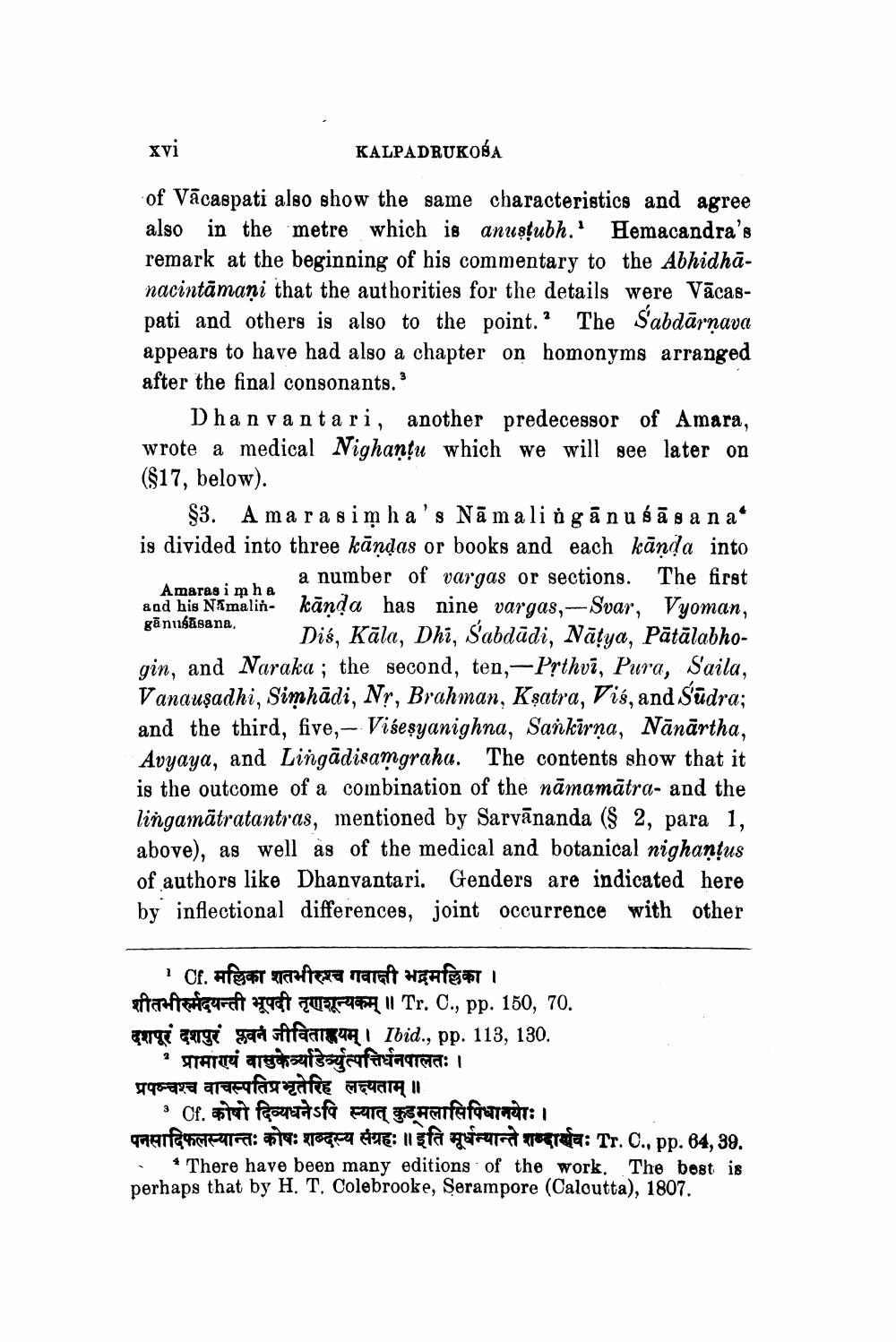________________
xvi
KALPADRUKOSA
of Vācaspati also show the same characteristics and agree also in the metre which is anustubh.' Hemacandra's remark at the beginning of his commentary to the Abhidhānacintāmaņi that the authorities for the details were Vācaspati and others is also to the point.' The Sabdārnava appears to have had also a chapter on homonyms arranged after the final consonants.
Dhanvantari, another predecessor of Amara, wrote a medical Nighanļu which we will see later on ($17, below).
$3. A mara simha's Nāmalingānu sās a na is divided into three kāndas or books and each kända into
w a number of vargas or sections. The first Amarasimha and his Nimalin- kānda has nine vargas,-Svar, Vyoman, gānusāsana.
Dié, Kāla, Dhi, Sabdūdi, Nātya, Pātālabhogin, and Naraka ; the second, ten,-Pșthvī, Pura, Saila, Vanauşadhi, Simhādi, Nr, Brahman, Kşatra, Vis, and Südra; and the third, five,- Visesyanighna, Sankīrṇa, Nānārtha, Avyaya, and Lingādisamgraha. The contents show that it is the outcome of a combination of the nāmamātra- and the lingamätratantras, mentioned by Sarvānanda ($ 2, para 1, above), as well as of the medical and botanical nighantus of authors like Dhanvantari. Genders are indicated here by inflectional differences, joint occurrence with other
? Cf. Afgar elaftena maraft HEART aftafticaret garant quatrill Tr. C., pp. 150, 70. eurge ange gan sifaaratą 1 Ibid., pp. 113, 130.
' प्रामाण्यं वासुकेाडेव्युत्पत्तिर्धनपालतः । प्रपञ्चश्च वाचस्पतिप्रभृतेरिह लक्ष्यताम् ॥
Cf. tat formatsfa FATE FSHATafatarët: 1 qanilanarsalma: 119: rogog dne: il gfal train toerofa: Tr. C., pp. 64, 39.
There have been many editions of the work. The best is perhaps that by H. T. Colebrooke, Serampore (Caloutta), 1807.




